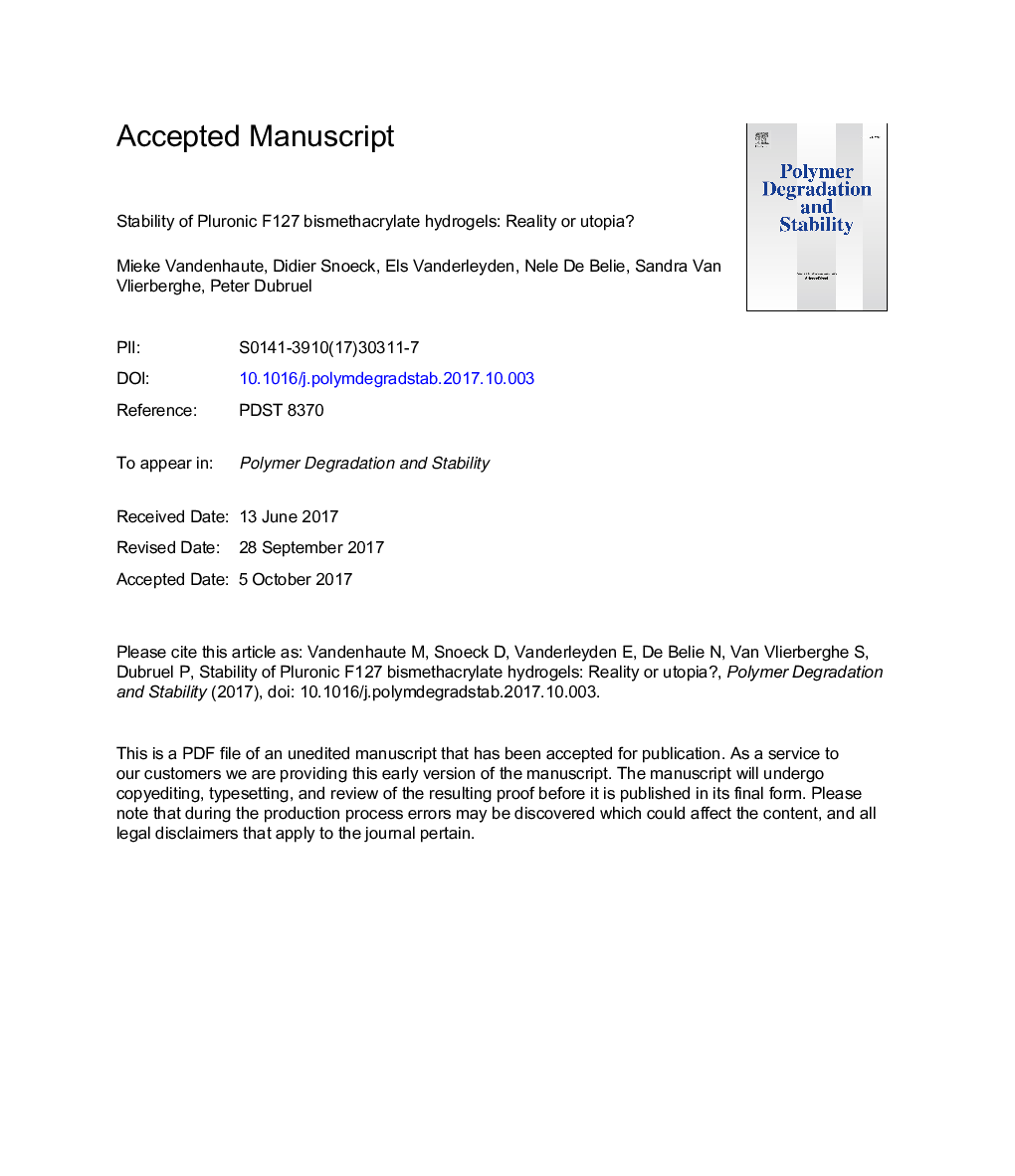| Article ID | Journal | Published Year | Pages | File Type |
|---|---|---|---|---|
| 7824239 | Polymer Degradation and Stability | 2017 | 42 Pages |
Abstract
Hydrogels are hydrophilic polymer networks which have the ability to absorb significant amounts of fluids from the surrounding environment. Therefore, these polymer materials can be interesting for various engineering applications including tissue engineering, drug release systems, self-healing concrete, etc. As a result, both stable as well as degradable absorbing polymers are required. In the present study, the long-term stability of cross-linked end-group modified Pluronic® F127 (PEO-PPO-PEO tri-block copolymer) hydrogels, i.e. Pluronic® F127 bismethacrylate (F127 BMA) hydrogels constituting different polymer concentrations (25 and 30% w/w) and crosslinked by two types of photo-initiator (Irgacure® 2959 versus VA-086®) were evaluated in various environmental conditions. Degradation was evaluated by determining the gel fraction of the materials stored either in inert atmosphere, air, water or phosphate buffered saline. In addition, the temperature of the surrounding environment was also varied to assess the effect of temperature on the degradation profile of the cross-linked hydrogels. The results indicate that the synthesized hydrogel degrades as a function of time, showing pronounced degradation upon storage in dry and wet conditions both at room temperature and at body temperature. The obtained results clearly and explicitly limit the application of these hydrogels for self-healing concrete. In the building industry, degradation is undesired as a stable polymer is required to achieve sealing and healing irrespective of the applied timeframe. However, (bio-)degradation can be particularly useful for several biomedical applications including drug delivery.
Related Topics
Physical Sciences and Engineering
Chemistry
Organic Chemistry
Authors
Mieke Vandenhaute, Didier Snoeck, Els Vanderleyden, Nele De Belie, Sandra Van Vlierberghe, Peter Dubruel,
